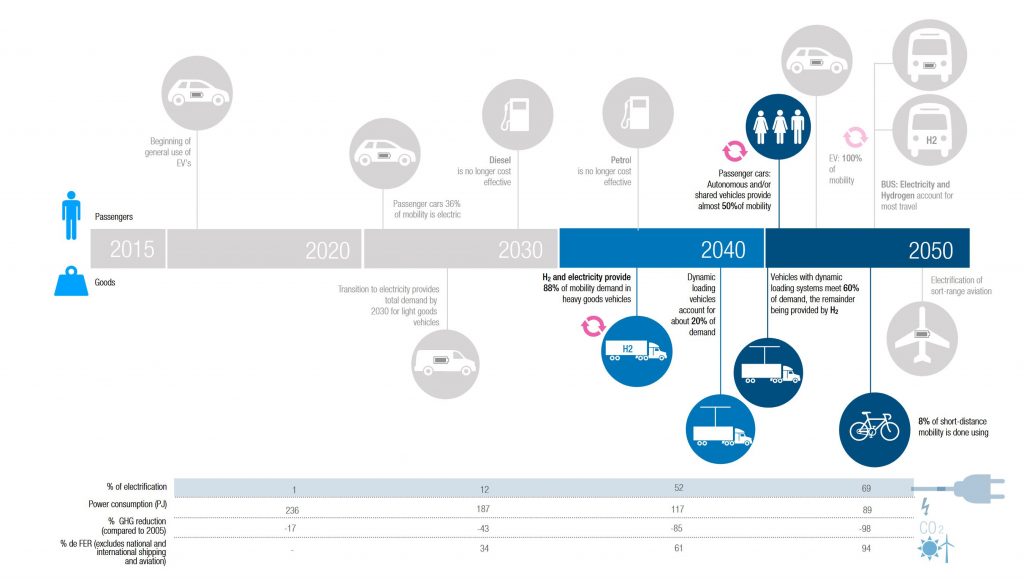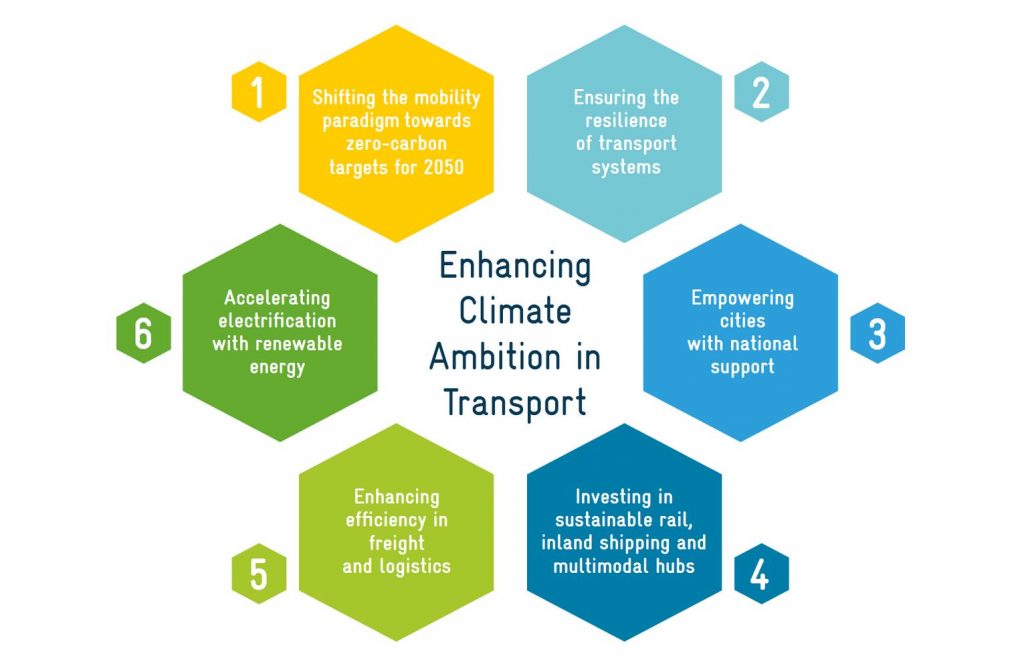Go back to the GIZ-SLOCAT NDC Transport Tracker.
The following page outlines key insights and recommendations derived from the GIZ-SLOCAT NDC Transport Tracker. These insights result from the assessment of the second generation of Nationally Determined Contributions (NDCs) and Long term Low Greenhouse Gas Emission Development Strategies (LTS). These findings are supported by good practices, which are highlighted in the green boxes. At the end of the document you can find information about the GIZ and SLOCAT campaigns to enhance transport ambition in NDCs. The information are based on the NDC submissions from 2020/21 and will be updated soon.
| For information on the background of the GIZ-SLOCAT NDC Transport Tracker, please refer to this page. We encourage you to use the database for your own work and research. Find relevant instructions in this how-to use guide. The summary analysis of the second generation NDCs can be retrieved here. Explore the NDC Transport Tracker here. |
Lesson #1: Low-income countries need more support in the implementation of NDCs and LTS.
While nearly every low-income country has submitted a second-generation NDC, still very few low-income countries have submitted a LTS, as of July 2023. The large majority of submitted LTS originate from European high-income countries. NDCs and LTS are an important opportunity for countries to express their need for international support, so engagement in this process is especially important for low-income countries. The transport actions featured in the NDC by low-income countries need to be supported by international climate finance.
| Transport Actions in Rwanda’s Updated NDC |
| Rwanda’s updated NDC includes a comprehensive set of transport measures on public transport infrastructure (including bus rapid transit systems), walking and cycling infrastructure, electric vehicles, and vehicle emission standards. The activities are linked to the Sustainable Development Goals. The focus is on mitigation measures; however, the document does include references to adaptation benefits. Access Rwanda’s Updated NDC here. |
Lesson #2: Overall adaptation content in NDCs has increased, but generally there are still many shortcomings on transport adaptation and infrastructure resilience.
In the first generation of NDCs, the topic of adaptation was often overlooked. The second generation of NDCs shows that countries have more knowledge and tools available to consider adaptation to climate change. However, the adaptation of transport infrastructure is not being reflected to the same extent as transport mitigation in terms of absolute quantity but also depth. Regarding depth, the issue is that the content of transport adaptation is superficial and often lacks to specify specific modes and detailed actions.
| Adaptation in Moldova’s Updated NDC |
| Moldova’s updated NDC puts a strong focus on adaptation. Over a dozen transport-related adaptation measures have been identified in the assessment. These activities cover resilient urban infrastructure, capacity building, funding schemes, resilience codes and standards, and more. View all measures in detail in Moldova’s Updated NDC here. |
Lesson #3: The second-generation NDCs feature twice as many references to mitigation as the first generation of NDCs.
They are only outpaced by the very lengthy and detailed LTS. These include a very rich diversity of transport measures which in some cases (e.g. Austria’s LTS) are structured according to the Avoid-Shift-Improve framework. Portugal has developed narratives on decarbonisation including a narrative on transport decarbonisation up to 2050 in its LTS (see the graph).

Lesson #4: Not enough attention is being put on aviation and shipping in NDCs and LTS.
These two sectors can be strengthened by:
| Fiji’s NDC includes the target to reduce domestic maritime emission 40% compared to BAU levels by 2030. Cabo Verde’s updated NDC, the Updated NDC by the US and Singapore’s LTS highlight the need to work closely with the International Maritime Organization and International Civil Aviation Organization in order to address international transport emissions. |
The broader global development community is also taking a closer look at new NDCs and LTS. Besides our transport-focused assessment of climate plans, there are numerous ongoing analyses on various aspects of NDCs, including
Building on existing transport-related roadmaps, calls for action, discussion papers and research findings, GIZ devised six essential recommendations for policymakers and other officials dealing with climate action and ambition in the transport sector. As policymakers draft their NDC revisions and updates, they can heed these recommendations, which have been broadly formulated to allow adaptation to divergent national contexts.
In addition to enabling emission reductions, the recommendations address various sustainable development challenges in the transport sector. Beyond fighting climate change, taking action in all six areas will help to reduce air pollution, noise and congestion, while also enhancing access to transport, road safety and the efficiency of the freight sector, contributing to six of the seventeen SDGs.

For an overview of the findings of the Six Action Recommendations please see the graphic illustrations in English, French and Spanish as well as postcards. Read more about GIZ’s Action Recommendations here.
As we collectively work to update and raise ambition in the new NDCs, we would like to share a set of key recommendations. These build upon SLOCAT’s 2020 recommendations, exploring how countries can scale up transport ambition in their NDCs due to in 2025 onwards. The approach builds upon WRI’s Five-Point Plan for Next Generation NDCs.
The Five-Point Plan for Transport in New NDCs focuses on the following points:
Clearly Defined Transport Emission Reduction Targets
Countries must set ambitious transport emissions targets for 2035, aligned with net-zero pathways by 2050. High-income nations, responsible for half of global transport emissions, need strong, Paris-aligned targets with clear baselines (e.g., 2010 or 2019). Medium-term goals for 2030 and targets aligned with doubling energy-efficient, fossil-free land transport by 2030 are essential.
Accelerating the Shift Toward Sustainable Transport
NDCs should drive transformation through regulatory frameworks and incentives. Policies prioritizing public transport, rail, walking, cycling, micro-mobility, and deploying zero- and low-emission vehicles across all categories are crucial. Bold domestic action in aviation and maritime transport and international ambition via the International Civil Aviation Organisation (ICAO) and the International Maritime Organisation (IMO) are needed.
Building Resilient Transport Systems
Transport resilience and adaptation must become central in NDCs, addressing climate-related disruptions through multimodal infrastructure. Adaptation measures should leverage National Adaptation Plans (NAPs) and align with sustainable development goals, strengthening links between adaptation and mitigation.
Redirecting Finance Towards Low-Carbon Solutions
NDCs must redirect finance towards resilient, low-carbon transport solutions, ending fossil fuel subsidies and internal combustion engine sales. Clearly defined unconditional and conditional financing needs, alongside technology transfer and capacity-building support, are vital.
Putting People First in Climate Action
People-centred policies in transport climate action are essential. NDCs should focus on accessibility, proximity, and reducing motorised transport reliance. Balancing technology-driven improvements with a strong “Avoid-Shift” strategy is critical, supported by policies and training for a just workforce transition.

Find more details (detailed explanations, case studies and more resources) about the five-point plan here and explore SLOCAT’s NDCs Library for more information on new NDCs.